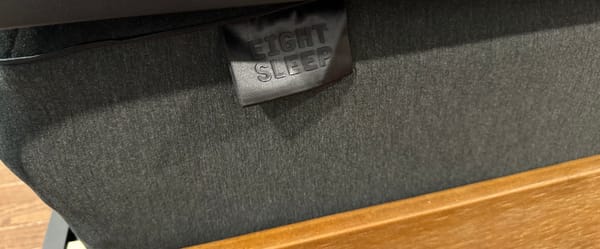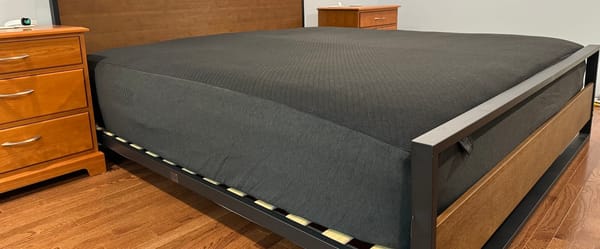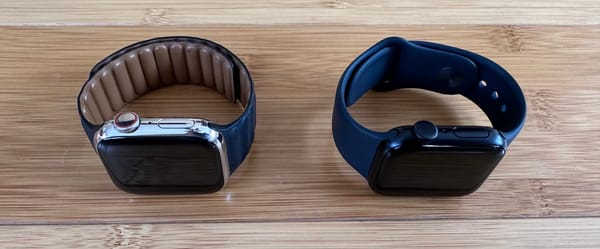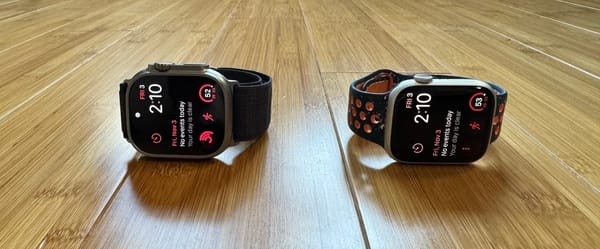Eight Sleep Pod 3 Cover Review: After 600 Nights of Sleep
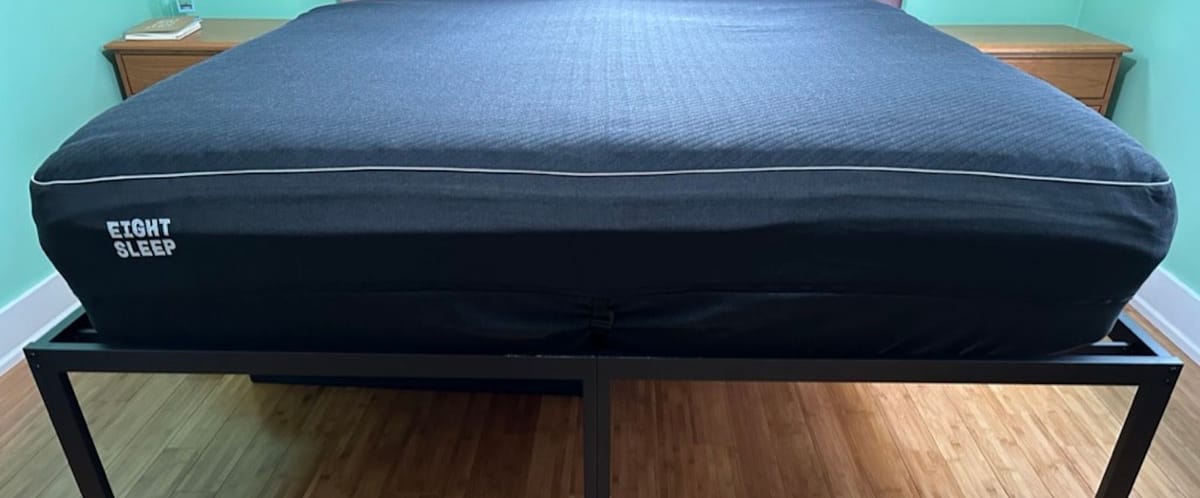
I was initially skeptical about Eight Sleep due to their over-the-top marketing and the lack of real reviews on the internet. All the reviews were from influencers who were given the Pod Cover for free.
Despite my initial hesitation, I caved and bought one. Now, it’s been more than a year total of sleeping on an Eight Sleep Pod Cover, and I’ve concluded that sleeping on a mattress that isn’t automatically cooled is now something I dread.
However, it’s not a no-brainer purchase for everyone because it’s expensive, and I have many longevity concerns. In this post, I’ll provide four reasons why you should buy the Pod 3, and a few reasons why it might not be a good fit.
Four Reasons to Buy
1. Temperature Control
The primary advantage of the Eight Sleep Pod Cover are the temperature-controlled zones, which are useful even in a temperature-controlled room because both sleeping partners get to sleep with their preferred temperature, rather than compromising on a universal room temperature.
Plus, window AC units can be loud and dry out the air, and central air systems without multiple zones can be inefficient for heating or cooling a single bedroom to the proper temperature.
How the Pod 3 Cover Works
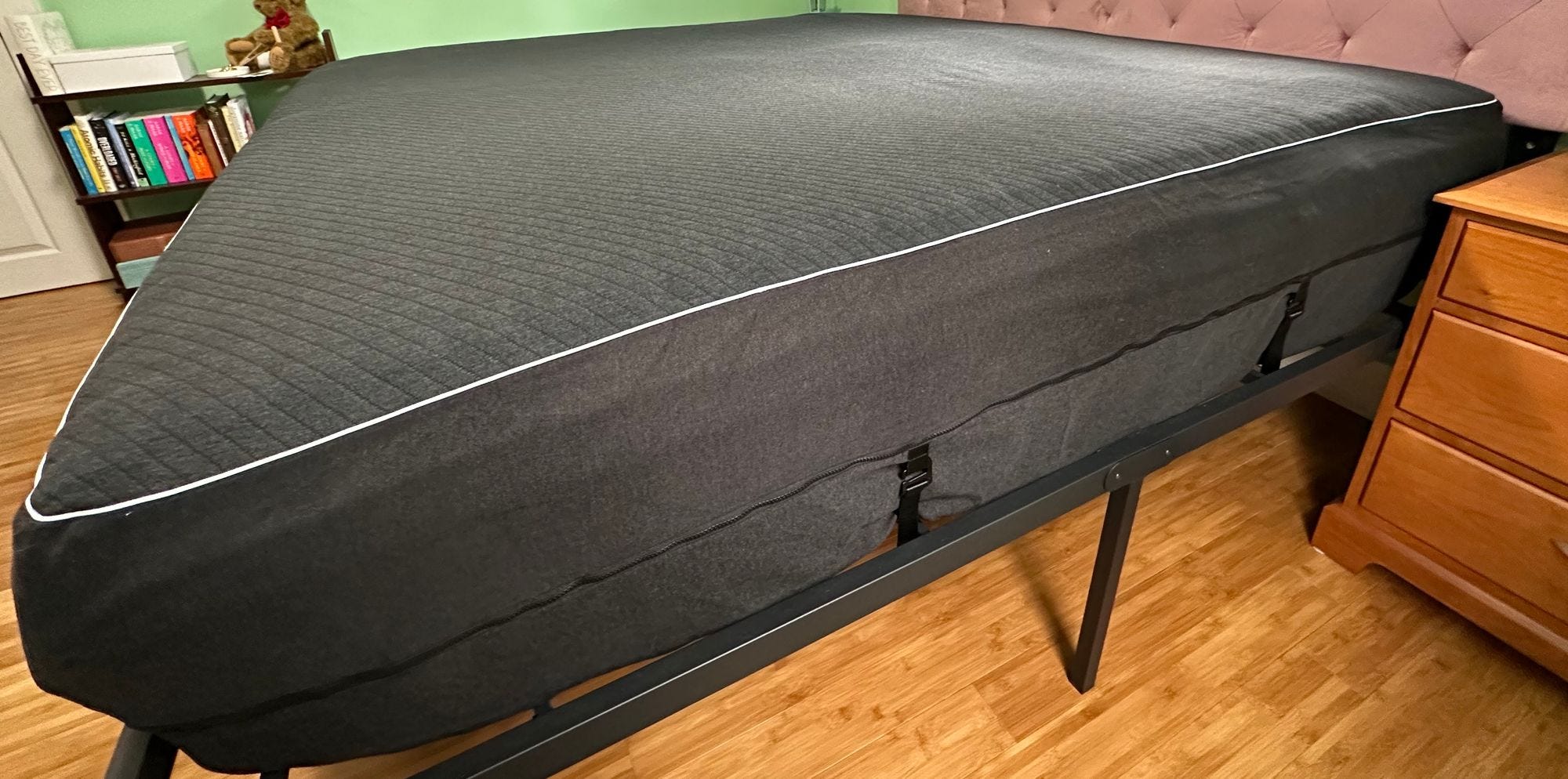
The active grid cover has water pumped through the coils to heat or cool the surface. It can heat up to 110°F, which is the +10-temperature level in the app. Or, it can get as cold as 55°F, which is a -10-temperature level in the app.
Eight Sleep’s initial questionnaire asks you how you typically feel while you’re in bed. Do you use a ton of blankets, routinely throw the covers off, or somewhere in between? It'll use your answers, along with data from other users, to recommend an ideal bed temperature for each stage of your sleep.
Once your bedtime and wake-up times are set, the Pod will automatically heat or cool your bed, so it’s at the correct temperature at bedtime. There’s a temperature dial in the app for manual control too, but I hardly use it since finding my preferred temperature.
Benefits of Temperature Control
Before I used the Eight Sleep, I’d often find myself throwing off the covers in the middle of the night to cool down during the hot months of the year. Now, after weeks of tweaking, my ideal cover temperature looks like this:
- – 4 when getting into bed
- – 3 during deep sleep
- – 2 during REM sleep
When sleeping, there’s nothing more discouraging than when the sheets stick to me and nothing more satisfying than laying down in a cool bed.
My wife has the opposite requirements. She’s universally cold. This is where Eight Sleep’s dual zones come in handy because each person gets an Eight Sleep account and full control over their side of the bed. The biggest reason to get an Eight Sleep is if you and your partner have vastly different temperature preferences while sleeping.

Before the Eight Sleep, my wife and I would fight over the bedroom temp, but now, it's mostly an afterthought. We keep the room at a neutral temperature, then customize our side of the bed to our preferences. Her side is usually around +3, while my side remains cool. She also reported that the heat helps with cramps and lower back pain during her menstrual cycle.
One thing I didn’t expect:
We used our AC less than normal. There are exceptions (when it’s 90°), but on an average summer night in New England, we use the AC just to cool the room while falling asleep, then have an auto turn-off timer after a couple of hours. The Eight Sleep is cool enough to satisfy my body’s needs, which means a quieter and less dry bedroom.
2. Improved Sleep Quality
The goal is to get as much deep and REM sleep as possible. Ideally, the Eight Sleep cover should help you feel more recovered without changing the amount of time you spend in bed because you’ll trade some of your light sleep for deep sleep. And potentially, it’ll help you fall asleep faster.
Eight Sleep has data showing improvements in their users’ deep sleep and ability to fall asleep faster. Although, I wouldn’t lean too heavily on Eight Sleep’s studies because they’re trying to sell you something.
So, is this all marketing speak, or is it legit?
I don’t have the proper equipment, and there are tons of variables, but I ran some tests.
On the Pod 2, I went thirty days without my Eight Sleep enabled and thirty days with the Eight Sleep on. I rotated on and off every week for eight weeks. According to my Oura Ring, my deep and REM sleep increased by about 5% combined, which works out to an extra 12 minutes of high-quality sleep per night.
On the Pod 3, I got four weeks of data using my Apple Watch, but I couldn’t see an obvious difference (in either direction) in my deep or REM sleep when comparing the nights. However, I averaged about four fewer tosses and turns with my Eight Sleep enabled (according to the Eight Sleep app).
Forget the Data
While my data is nowhere near perfect, my testing showed that my light sleep decreased by a small yet noticeable margin during my first round of testing (data via the Oura Ring). And in the most recent set of testing (via the Apple Watch), the only noticeable difference was fewer tosses and turns.
However, my anecdotal experience without the Eight Sleep may tell a better story.
For both sets of testing, I cut it shorter than planned because I hated sleeping without my Pod turned on. I had no interest in sleeping more than a full month without my cooled bed, even though I knew it’d make for a better blog post.
Each time I’m without my Eight Sleep, I realize how much I miss it. I went on two different week-long vacations last year, and I felt hot and couldn’t get comfortable for big chunks of those trips. Sure, I could get used to sleeping without an Eight Sleep, but this experience speaks to how you tend to forget about how useful a thing is once you get used to it until you are without it. Vacations are a nice reminder of how much I love my cover.
3. Sleep Tracking
Eight Sleep tracks your movements, sleep cycles, and time slept. The best part is that you don’t need to wear anything on your wrist or finger and tracking happens automatically each night. And, to top it off, you can export your sleep data into other fitness apps like Apple Health.
Each morning, you’re provided with a Sleep Fitness Score based on a 100-point scale, which comes from a combination of time slept, wake-up consistency, time to fall asleep, and time to get up.
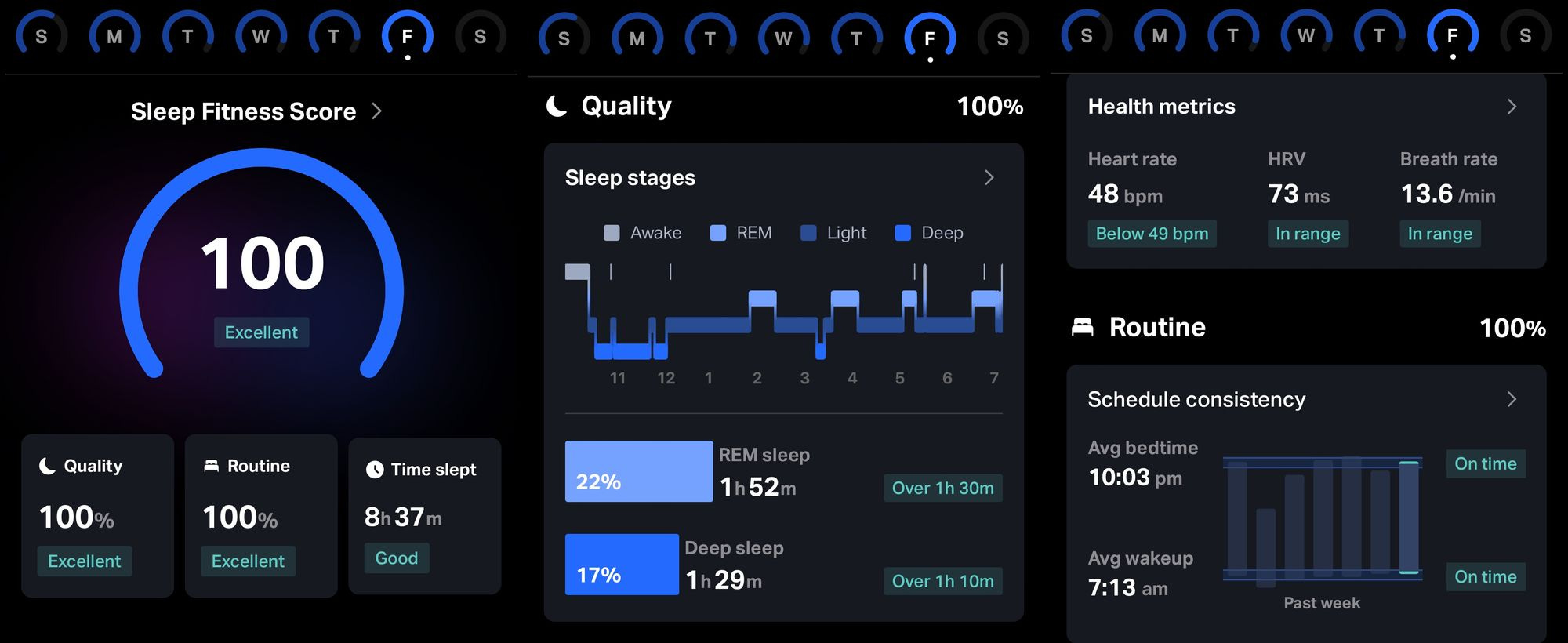
Eight Sleep’s sleep data isn’t perfect, especially if you roll over to your partner’s side, but I found time asleep and wake-up times to match my Oura Ring and Apple Watch closely as long as I stayed on my side the whole night. You’ll occasionally see a wake-up time that got cut a little short, but you can manually edit if that happens.
The Pod 3 has more sensors than the Pod 2, but it seems more like marketing-speak because I didn’t see it play out in real life. If precise deep sleep, and REM sleep data are important to you, consider buying a dedicated sleep tracker. Personally, I try not to overanalyze my sleep because it makes me anxious, but I like to know how long I slept, and Eight Sleep shines in this respect.
As for the other health data (HRV, RHR, and respiratory rate) that Eight Sleep records, it’s unclear if it's as accurate as other devices. Anecdotally, on days when I have an intense cardio workout or drink alcohol, Eight Sleep shows that my HRV is usually lower and my RHR is higher than my baseline, which tells me that the data is probably at least directionally accurate.
4. Alarm
Eight Sleep has a feature called GentleRise that vibrates the bed when it’s time to wake up. You can also add more heat or coolness during your wake-up time.
My wife thinks the gentle vibration alarm is one of its best features, but I appreciate this feature even more because I usually don’t feel or hear it when her vibration alarm goes off on her side. Compared to a loud phone alarm that wakes up everyone in the room, it’s amazing!
GentleRise is another feature that shows Eight Sleep is great for couples who have different sleep preferences and schedules.
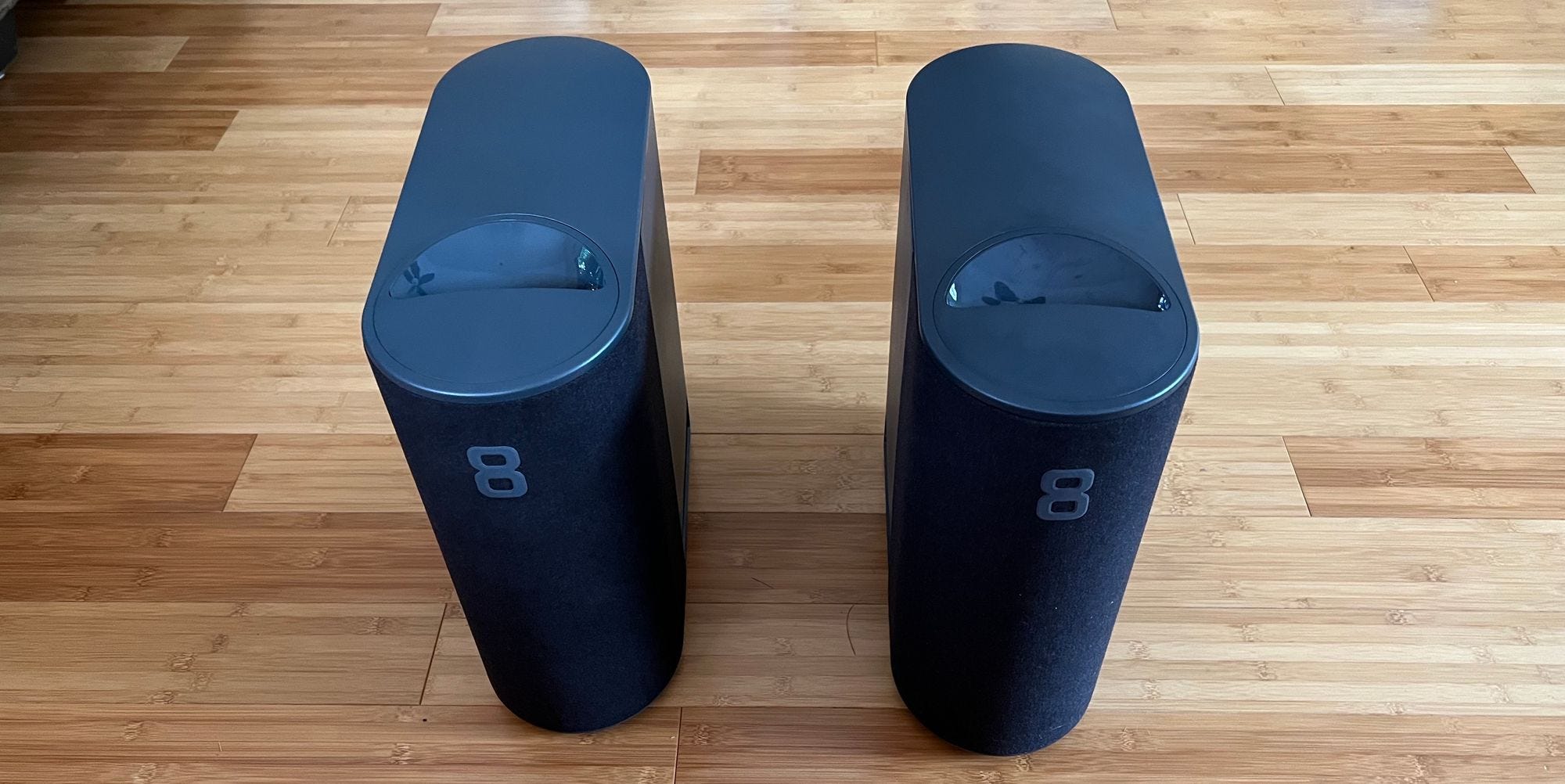
Three Reasons Not to Buy
1. Expensive
The Eight Sleep Pod 3 Cover costs between $2,000 and $2,500, depending on the size of your mattress, but financing is available to lighten the blow. For a queen-sized cover, it’d be ~$60/month for three years with no interest.
Unfortunately, Eight Sleep recently put the majority of its features behind the paywall. The Pro ($180/year) subscription is mandatory for the first year of ownership, which works out to an additional $900, assuming five years of ownership.
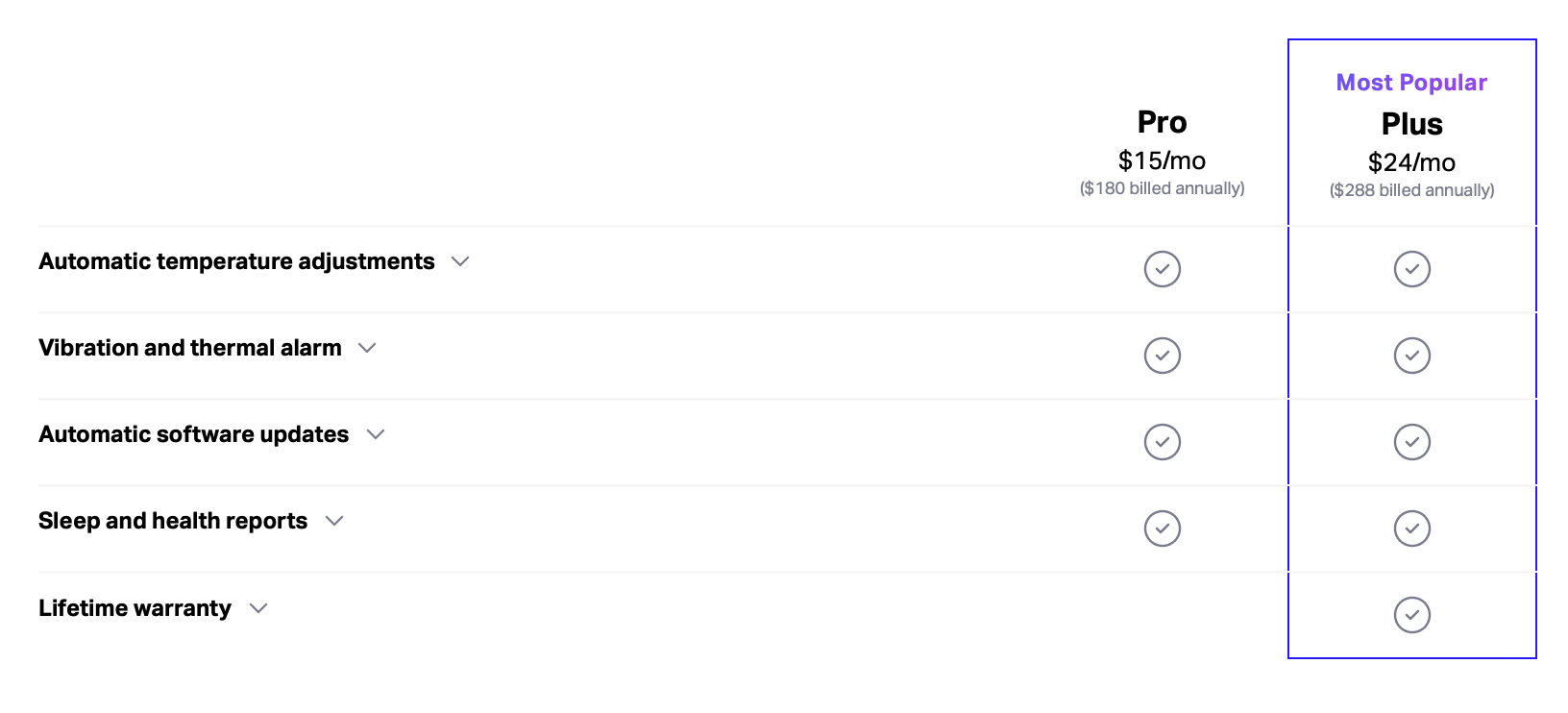
The good news? You can cancel the subscription after the first year. The bad news? You'll only get one feature: manual temperature control. Health and sleep tracking metrics, along with the vibration alarm, and the scheduled heating and cooling are all disabled.
Can you get by without a subscription? Maybe! But remembering to turn on the Pod each night before bedtime, and to turn it off in the morning, might be challenging. Plus, you’ll miss out on the alarm and sleep tracking too.
Subscriptions for fitness gear aren’t new, but I still hate this move! I’d rather pay more upfront for something and truly own it. I currently pay $44/month for the privilege to ride my Peloton, but it's the primary reason why I no longer own an Oura Ring or Whoop. That being said, I’d rather see Eight Sleep do this to survive if the alternative is disappearing.
I’m grandfathered in and have the Eight Sleep free for life, but if I were a first-time buyer again, I’d likely still buy the Pod 3 and reluctantly subscribe to the Pro plan. However, the subscription will rightfully dissuade a lot of people from pulling the trigger.
2. Longevity
I had the Eight Sleep Pod 2 on my bed for eight months. It’d occasionally get noisy, which initially worried me, but it turns out this is normal. Every few months, the Pod requires a "prime of the pump" to circulate the water around the coils for ninety minutes, which removes the air bubbles causing the noise.
Otherwise, I ran into no issues with my Pod 2 until I took it off to replace it with the Pod 3. When I did, I noticed a ring from the hydrogen peroxide near the pump connection on the encasement cover. It wasn’t a major leak because my sheets were never once wet, and the mattress was unstained. But it was concerning, so I reached out to Eight Sleep to let them know, and they sent me a free replacement Pod 2 within a week.
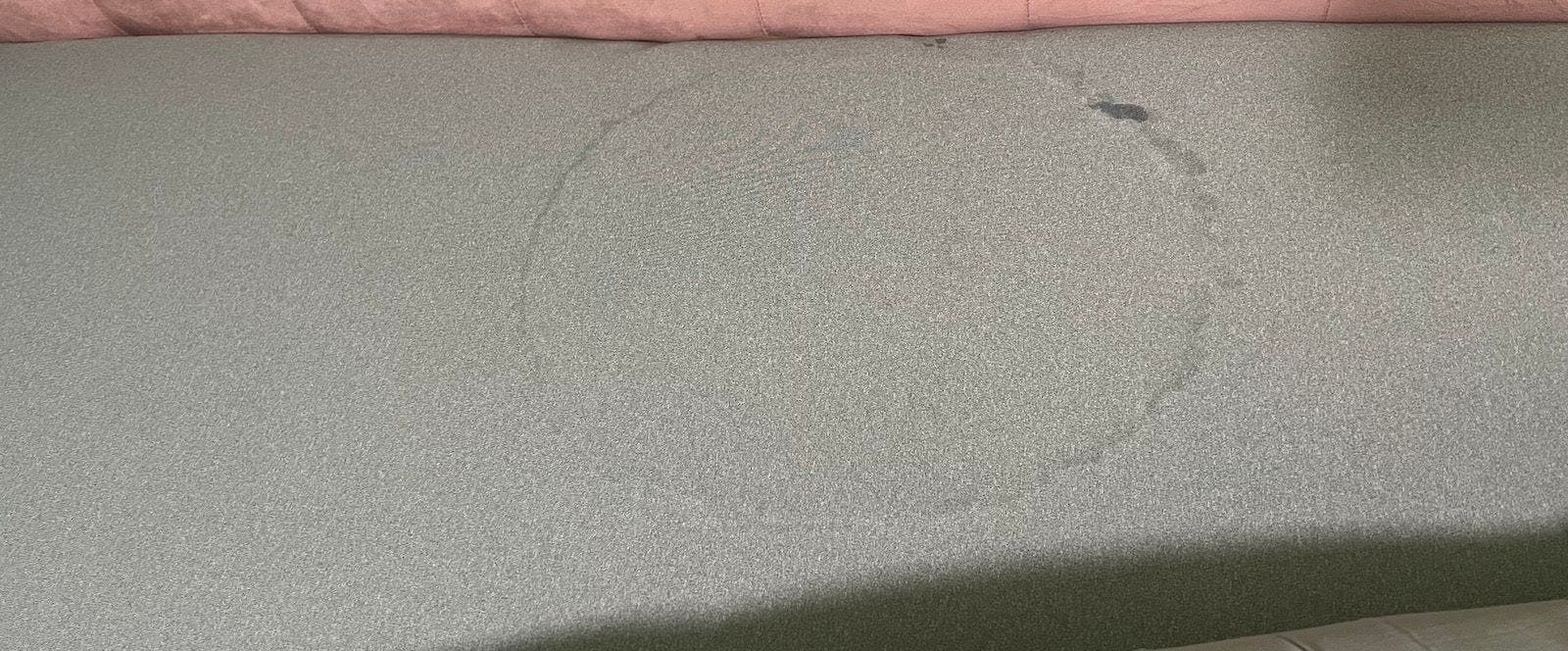
What do I make of this situation?
Pessimistic take: There’s a small yet noticeable number of people on the internet who’ve had leaks with their Pod 2. If my cover didn’t last eight months without leaking, how many people would get through five years of ownership with a leak-free cover? The customer service was fast-acting, but the cover only comes with a two-year warranty. What happens after that? That’s a scary thought because Eight Sleep might not even be around by then.
Optimistic take: My leak was so insignificant that I didn’t even know it happened. It likely would’ve gone unnoticed if I hadn’t upgraded to the Pod 3. Plus, the Pod 3 likely addresses any of the leak concerns from the previous generation, and there are no signs of leaks after a year of sleeping on the Pod 3 Cover. I can’t find a single complaint about the Pod 3 on Reddit either.
Either way, Eight Sleep’s longevity is something you should consider when dropping thousands on one. However, if this is a concern of yours, consider upgrading to Eight Sleep's Plus plan. It's essentially an insurance policy for $108/year that provides a five year warranty.
3. Comfort
When I reviewed the Pod 2, I said, "you’ll need to sacrifice a bit of surface comfort" because I could feel the coils and sensors throughout the grid. Plus, the Pod 2 has an annoying strap that runs along my chest that gets tighter as the person on the other side moves. I eventually adjusted, and these were worthy sacrifices for temperature control, just not ideal.
The good news is that the Pod 3 improves the surface comfort by a solid margin. Surprisingly, Eight Sleep undersells the comfort improvement, even though it’s the only obvious difference between the two Pod generations.
If the Pod 2 surface comfort is 6/10, the Pod 3 is 8.5/10. The giant strap from Pod 2 (across the chest) is gone, and the coils and sensors are hardly noticeable because they’re masked differently with padding compared to Pod 2. The padding configuration makes it feel like you’re floating on top of the coils rather than directly touching them.
But keep in mind, sleeping on an Eight Sleep isn’t like sleeping on a naked mattress. You’ll still feel some firmness, so if you like an extra squishy bed, the Eight Sleep might not be ideal for you.
Comfort Zones
The temperature zones are great, but if you and your partner have vastly different preferences in temperature, you might not like the experience if you accidentally roll over to their side. Having a boundary line can be tough to get used to at first, but luckily, my wife and I have a king bed, which makes it easy to stay in our zones. But it may be bad news if you and your partner like to sleep close to each other.
Who is this for?
The Eight Sleep Pod Cover 3 is an amazing product, and it made a huge leap in surface comfort compared to the Pod 2. While I could only prove a small difference in my sleep quality with data, more importantly, I hate sleeping without it.
Eight Sleep is expensive, but I’m cool with spending the extra money to optimize important aspects of my health. With that said, it’s a luxury purchase. I slept without an Eight Sleep for almost thirty years without major issues.
The Eight Sleep is great if you’re often uncomfortable during the night and even better if you and your partner have vastly different temperature preferences. I’ve seen nothing with the Pod 3 to indicate that it won’t last the next five years, but you’ll need to watch how others experience the Eight Sleep and make your own calculated risk. It’s a risk worth taking, in my book.

